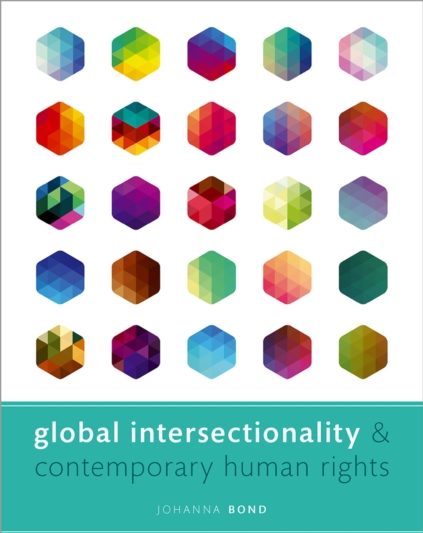
Intersectionality and Human Rights A new book from W&L Law professor Johanna Bond pulls together decades of research to address identity discrimination.
Johanna Bond, the Sydney and Frances Lewis Professor of Law at Washington and Lee, recently published a book drawing on decades of research and on-the-ground experience with the application of feminist legal theory in international human rights work.
The book, “Global Intersectionality and Contemporary Human Rights” (Oxford University Press), argues for an expansive definition of human rights, one that encompasses the harm caused by multiple, intersecting forms of subordination. Bond was honored with the 2021 Lewis Prize for Excellence in Legal Scholarship for her book.
Bond’s analysis draws on intersectionality theory, a term that was coined by Kimberly Crenshaw in the late 1980s and that grew out of Black feminist voices dating back to Sojourner Truth in the 1850s.
“Intersectionality theory posits that aspects of identity, such as race and gender, are mutually constitutive and intersect to create unique experiences of discrimination and subordination,” Bond says. “The notion that forms of subordination and privilege intersect in people’s lives in complex and mutually reinforcing ways has replaced outdated, simplistic conceptualizations of discrimination.”
Bond explains that in rejecting the idea that individuals experience neatly compartmentalized forms of discrimination based alternately on, for example, race and gender, intersectionality recognizes the complex interplay between systems of oppression and power structures.
“Intersectional human rights analysis allows us to see how subordination based on ethnicity and disability, for example, combine to produce human rights violations targeting people with disabilities in marginalized ethnic communities,” she says. “They may experience discrimination based on ethnicity within disability communities and discrimination based on disability within their ethnic communities.”
Bond argues that human rights remedies that fail to capture the intersectional nature of human rights violations do not offer comprehensive redress to victims. She says that the United Nations, the central intergovernmental organization charged with the protection of human rights, has been slow to embrace the insights gained from intersectionality theory.
“The U.N. system is set up so that one often has to choose to pursue a claim based on one kind of discrimination,” she explains. This, among other factors, has led to “a lot of missed opportunities to apply intersectionality theory in the context of human rights.”
Bond says that the UN treaty bodies are now embracing intersectionality more regularly in their human rights work, and she is hopeful that the treaty bodies move toward a more consistent application of intersectionality theory in adjudicating human rights complaints.
“The UN should implement structural changes that will facilitate more consistent intersectional analysis in the work of the human rights treaty bodies, making human rights remedies more comprehensive and more satisfying for victims.”
If you know a W&L faculty member who has done great, accolade-worthy things, tell us about them! Nominate them for an accolade.
 Global Intersectionality & Contemporary Human Rights (OUP)
Global Intersectionality & Contemporary Human Rights (OUP)
You must be logged in to post a comment.